
The author has long observed birds and recorded her findings in journals. This handsome book provides a glimpse into those observations combined with a variety of poems about her feathered subjects. Notes about her writing and additional resources are sure to inspire similar activities by young scientists.
The Robin Makes a Laughing Sound: A Birder’s Journal
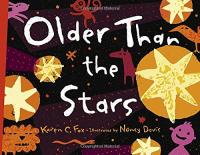
Bright, angular illustrations almost frantically zoom across pages and combine with the cumulative rhyme (think of “This is the House That Jack Built”) to explain how the earth was formed. It concludes that”…You are as old as the universe itself.” Additional information appears on each horizontal spread. A timeline of the universe and a glossary concludes this effective presentation of a complicated theory.
Older Than the Stars
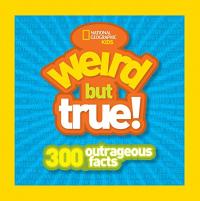
Did you know that slugs have “3,000 teeth and 4 noses” or that in “elephants sometimes make purr-like sounds when content”? These and other factoids are presented in a highly designed format just right to amaze and to pique curiosity. An index allows easy access to the brief information.
Weird but True! 300 Outrageous Facts

This lighthearted look at the many sources of energy provides an introduction to physical and environmental science, informing while entertaining. Illustrations combine factual graphics and cartoon-like characters. Additional information about energy concludes this playful look at a serious topic.
The Shocking Truth About Energy

Two different environments, two different authors, one goal achieved: to bring alive the process of studying and documenting a fascinating mammal and insect. Both books use the same basic format and text features, stunning photographs, and an informal voice to great effect. This is a series not to be missed. See also: Face to Face with Butterflies (opens in a new window)
Face to Face with Manatees

Amos, a mouse, presents scientist, inventor, and early American Benjamin Franklin from his viewpoint. First published in 1939, Ben and Me uses humor and lively language ideal for sharing aloud to bring Ben and Amos to life.
Ben and Me: An Astonishing Life of Benjamin Franklin by His Good Mouse Amos
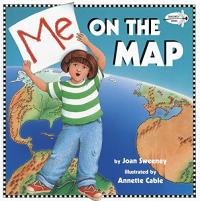
The United States is a big place which holds many children and their families. Maps and what they show are introduced by a girl who begins with a drawing of her room in her home. The house is then placed on a street, in a town, etc. until we see the U.S. as part of the world. This accessible book may help children understand their place on the map — and in the census.
Me on the Map

What makes snow crystals unique? What conditions allow their formation? How does one catch a snowflake? These and additional information and activities about snow are explored in this lucid and attractive presentation just right as one watches winter games.
The Story of Snow: The Science of Winter’s Wonder

Dr. Flossman welcomes his class of incisors, canines, etc. (appropriately for each of the typical mouth’s 32 teeth), providing actual information in a wacky, slightly abstract combination of art and story.
Open Wide: Tooth School Inside

Babies don’t have teeth as they don’t need them yet. But as children grow, teeth grow in and then fall out to be replaced by adult teeth. This informative, appealing, and easy science book is just right to answer early questions about teeth and dental hygiene — and may encourage even more questions.
How Many Teeth?

Aldrin relates how he, the second man to walk on the Moon, became interested in aeronautics and flying. The result is a fascinating look at his personal history as well as the history of flight accompanied by precise but equally engaging illustrations.
Reaching for the Moon
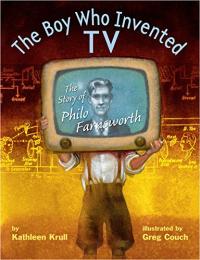
Two machines captivated young Philo Farnsworth: a telephone and a phonograph. Both had cranks and both connected people with others (one in real time, the other through music). These and other inspirations motivated young Philo to invent what was to become known as the television. His early story is fascinatingly told and well illustrated.
The Boy Who Invented TV: The Story of Philo Farnsworth

A hungry owl sits on a branch to listen for something he might catch for dinner, like a plump little mouse. The predictable pattern, onomatopoeic words, and realistic, highly detailed illustrations combine to make a satisfying story for all except for the still-hungry owl.
Whoo Goes There?

The famous cat in a red and white striped hat is used to introduce basic information about space as well as space trivia. As in others in the series, the limited vocabulary in a predictable format provides easily accessed and understood information about a popular topic.
There’s No Place Like Space: All About Our Solar System

Poets have always looked to the sky for inspiration. A range of contemporary and older poets and their exploration of the stars, sky, moon — and more — are presented, illustrated with lush, evocative paintings.
Sky Magic

The encyclopedic presentation in an oversized format support about 200 photographs from NASA as well as other illustrations to chronicle the history of space flight. Rockets and the moon landing are also included. A DVD with historical footage from the moon landing completes this attractive package, sure to be enjoyed by a range of readers.
Mission to the Moon

When his teacher assigns a science project, 3rd grader Oliver is enthusiastic about doing it independently. His rather overprotective parents, however, have different ideas. How Oliver and his newfound friend and classmate overcome the obstacles makes for engaging reading with lots of laughs.
How Oliver Olson Changed the World
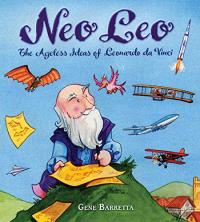
Even though Leonardo da Vinci lived a long time ago (born in 15th century Florence), his ideas have intrigued inventors and scientists ever since. In cartoon-like illustrations and brief text, old “Leo” ideas are juxtaposed to newer “Neo” ideas. This playful book is informative and engaging and may inspire further investigation of man and inventions.
Neo Leo: The Ageless Ideas of Leonardo da Vinci

How the Murray children search through time to find and save their missing scientist father continues to enthrall readers even 50 years after its publication. The author was awarded the Newbery Medal for what has become a classic time travel fantasy.
A Wrinkle in Time

Made to look like a scrapbook, this history of man’s interest in space flight, the space race, and the first lunar landing will appeal to sophisticated readers. This detailed presentation requires multiple examinations.
One Small Step: Celebrating the First Men on the Moon

Poetic language and striking illustrations evoke the drama of the first lunar landing. Neil Armstrong and Buzz Aldrin’s first impressions are captured with awe and may well inspire young scientists.
One Giant Leap

Apollo 13 attempted to repeat Apollo 11’s successful Moon landing. An explosion, however, changed the mission to just get the astronauts home safely. Dual texts and dramatic illustrations tell the remarkable story and extend the information presented.
Lucky 13: Survival in Space

Apollo 11 astronaut Buzz Aldrin takes the reader on a journey through centuries of air and space aviation, from Isaac Newton to exploring Mars to futuristic space tours. Fascinating details and a timeline are embedded throughout.
Look to the Stars

Realistic but soft and evocative illustrations recall a boy’s wonder as man first walked on the Moon. This attractive book was rereleased in time for the 40th anniversary of this memorable event.
